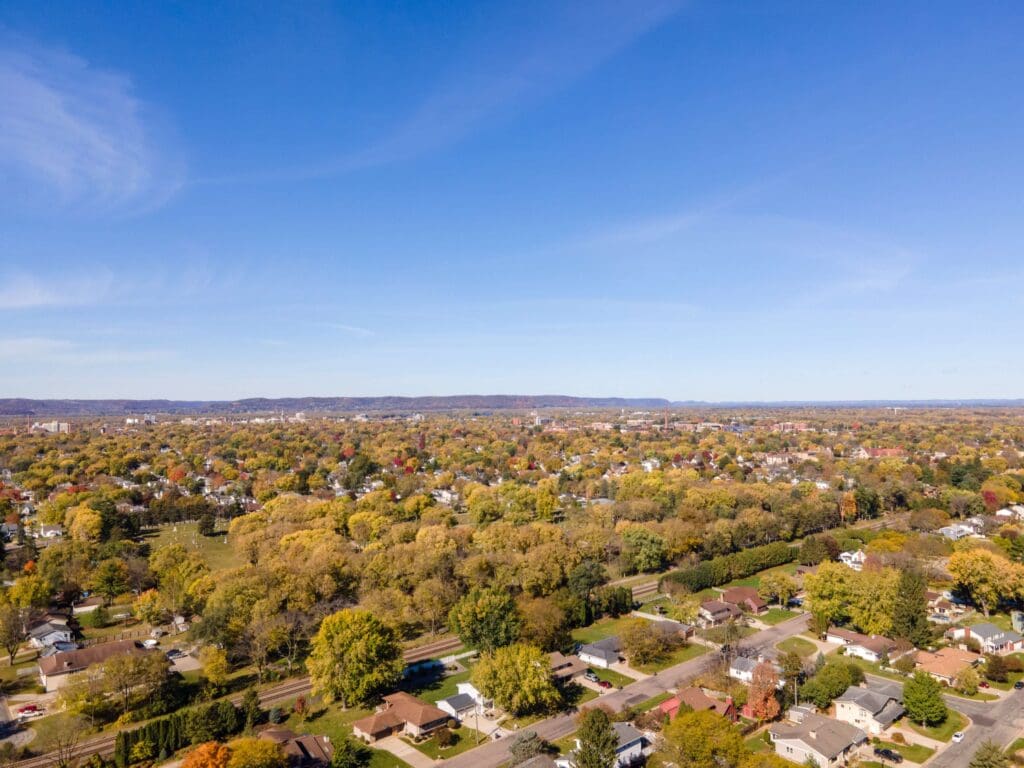One runner explores the importance of urban trees in the heat of the climate crisis

By Emilie Bahr
I am an almost-lifelong runner, which is to say that even as my mile time wouldn’t hint at it, I have been running since I was two years old when my parents started the first running business in my hometown of Baton Rouge, and I took part in the kids’ fun runs to have something to do while my parents stressed over the many details that go into making running races run smoothly.
In the 40 years since, with the exception of a few years here and there, I have run most days, not so much because I especially enjoy running at the time I’m doing it, but because I find it hard to have a great day without having run. (“Have you run today?” my husband will sometimes ask me on the heels of some less-than-stellar interaction, knowing full well the answer.)
Running in the Heat of the Subtropics
When you are a runner and you live in the subtropics in the summertime, as I do, where one day recently the heat index soared well north of 100 degrees and excessive heat warnings lit up my phone, it can be challenging to keep up with your primary means of staying sane.
But I’m fortunate to live in a neighborhood where I can find a fair amount of tree cover. I live near one of the world’s top repositories of ancient live oaks and am eternally grateful when the air is as warm and thick as it’s been lately for the foresight on the part of whomever it was who planted these graceful beacons hundreds of years ago. These trees can make it feel a good ten degrees cooler than it might in unshaded areas.
One especially tree-lined street near my house accounts for some of the most in-demand real estate in my city. I’m no realtor, but if I had to guess, the desirability of this street is due in part to the canopy that seems to embrace you and make you feel as though all is right in the world. As in most cities, the tree canopy serves as something of a barometer of wealth and clout and grows far more sparse if you travel it in the direction of the infamous Claiborne Expressway, where the lovely rows of live oak trees that formerly lined this once-thriving Black business corridor were razed years ago.
Urban Trees as a Climate Solution
My tree evangelism has expanded over the past several years, as the realities of climate change have grown more pronounced and as I’ve become ever more convinced that trees are an underappreciated climate solution, as well as a mechanism for addressing a number of other ills we confront in the modern world. From soaking up carbon and stormwater to providing habitat for endangered birds and other animal species — there is even evidence that they can improve mental health, reduce crime, and slow traffic – trees’ virtues are expansive and extraordinary.
On our rapidly-warming planet, as I am reminded every summer, trees can make it more feasible to get around outside of cars, and not just for exercise. The live oaks lining nearby Esplanade Avenue allow me to make my evening walk to a neighborhood restaurant (and avoid heating up my kitchen) or to the local grocery store without too much discomfort.
The Inequity of Neighborhood Tree Coverage
So many of our cities have seen their tree canopies diminished, these amazing assets felled by natural disasters, for road expansions and other building projects, and even in the name of traffic safety. The phenomenon has been particularly pronounced in marginalized communities, but I’m heartened by growing awareness of trees’ benefits and efforts afoot to invest in urban trees. With a heat wave of the sort scientists say will only become more common making the outdoors intolerable across large swaths of the Northern Hemisphere, it’s clearly time for all of us to start thinking more about trees.
Here are some more resources on the subject:
- National Geographic does a great job of explaining the disparities in shade across urban neighborhoods that are largely driven by racist public policy – and how activists are working to rectify the situation.
- The New York Times’ The Daily interviews Phoenix’s chief heat officer at a time when the city had recorded a record 19 consecutive days above 110 degrees. His prescription for a more comfortable future: Increased tree cover.
- Houston, Texas has an aim of planting 30 million trees by 2030 as part of its climate and equity goals.
- This website tracks tree equity across the U.S. (The tree equity score on my block is 85. What’s yours?)
- This 2017 article from the Congress for the New Urbanism’s Public Square outlines how street trees are sometimes removed in a misguided attempt at improving safety.
- Urban designer Victor Dover proclaims his love of street trees and their role in creating people-friendly communities in this TEDx talk.
Emilie Bahr is a part of the America Walks team. She is a writer and AICP-certified urban planner, and an avid pedestrian, runner and bicyclist passionate about making communities more conducive to active transportation. Emilie’s research and professional interests center on how the shape of the built environment influences public health, economic opportunity and environmental outcomes.